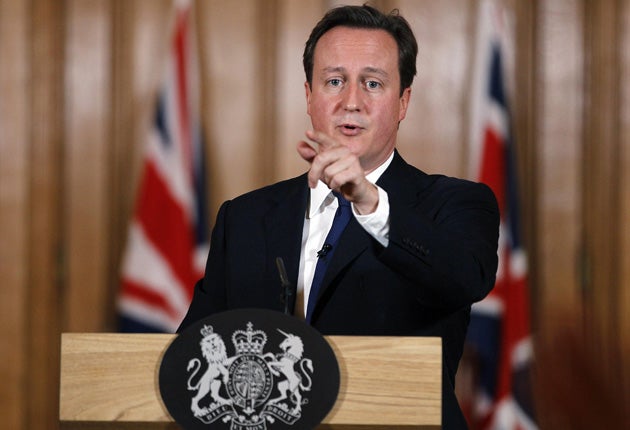US grenade may have killed hostage, Cameron admits

The American and British governments’ account of the death of Linda Norgrove in Afghanistan fell apart yesterday, with the revelation that she may have been killed by the US forces sent to free her.
David Cameron was forced to retract his announcement that the 36-year-old aid worker had been murdered by one of her captors. Instead, the Prime Minister said, a grenade thrown by an American soldier may have killed her.
None of the US special forces taking part initially reported throwing fragmentation grenades near Ms Norgrove, and it only came to light after video footage from head cameras worn by members of the squad was examined.
General David Petraeus, the US commander of Nato forces in Afghanistan, called David Cameron yesterday morning to inform him of the discovery, and ordered an inquiry into the operation amid angry recriminations.
Other discrepancies in the initial official version of events emerged yesterday. American and British officials had claimed that Ms Norgrove had been blown up by a suicide vest right next to her, which would have resulted in instant death. Yet, US troops confirmed that she was still alive when they got to her and gave her emergency medical help before airlifting her out in a helicopter.
Furthermore the attack took place in the early hours of the morning and Ms Norgrove’s abductors were mostly asleep and taken by surprise. Analysts pointed out that insurgents do not normally go to bed wearing suicide vests or sit around wearing them. They are put on prior to carrying out a prearranged attack.
John and Lorna Norgrove, Linda’s parents, are still waiting for a full explanation of what happened. Yesterday they were joined by their second daughter, Sofie, at their home on the Isle of Lewis. Mr Norgrove said: “We are not saying anything at the moment. We might issue a statement in another day or two, we’re not certain, but now we are not saying anything.”
The exact terms of the inquiry are yet to be decided. But, according to Nato officials, among the questions it would address is why US, Nato and British officials were so forcefully claiming that Ms Norgrove’s death was due to a suicide detonation before all the evidence had been reviewed – and also why highly destructive fragmentation grenades were used in a mission where avoiding harming the hostage would be the primary concern.
The Prime Minister, who had personally authorised the operation, said that he had spoken to Ms Norgrove’s family about the “deeply distressing” news and it was “deeply regrettable” that the official version of events had proved to be incorrect. “We must get to the bottom of what happened, first of all, so the family gets this information and knows exactly how their daughter died,” he added.
A number of Afghan officials maintained that the kidnappers, who had worn Afghan army uniforms, were criminals rather than insurgents who had already made indirect contact with British diplomats in Kabul with the aim of freeing her for a ransom. One source with knowledge of the discussions claimed there was only a marginal risk of Ms Norgrove being spirited across the border. “They were not hardcore insurgents. That’s complete rubbish, they were after money,” he said .
Earlier Khalilullah Zaiyi, the police chief of Kunar province, stated that a delegation of 22 local elders had arranged a meeting with the kidnappers. He stressed that previous abductions had been resolved through negotiations and there was no reason to believe that should not be the case this time as well. Mohammed Azar, one of the elders, said: “We are certain we could have been successful, but we were not given the time needed to do this.”
Mr Cameron said: “In the end this is an issue of a very difficult judgement… You can never be certain that an option like this will lead to the rescue of the hostage … In the end you have to make a decision whether to go ahead or not. I will obviously go over in my own mind a hundred times as to whether it was the right decision but I profoundly believe it was, given the advice and the information and everything we knew about Linda’s dreadful situation having been taken hostage.”
British troops were not involved in the rescue operation apart from a liaison officer and some military sources held yesterday that UK special forces would have handled matters differently. But defence officials pointed out that a British-led mission to rescue the New York Times journalist Stephen Farrell resulted in the death of a soldier and civilians, including a fellow hostage Sultan Munadi, an Afghan journalist.
Subscribe to Independent Premium to bookmark this article
Want to bookmark your favourite articles and stories to read or reference later? Start your Independent Premium subscription today.

Join our commenting forum
Join thought-provoking conversations, follow other Independent readers and see their replies